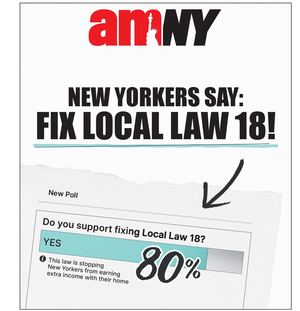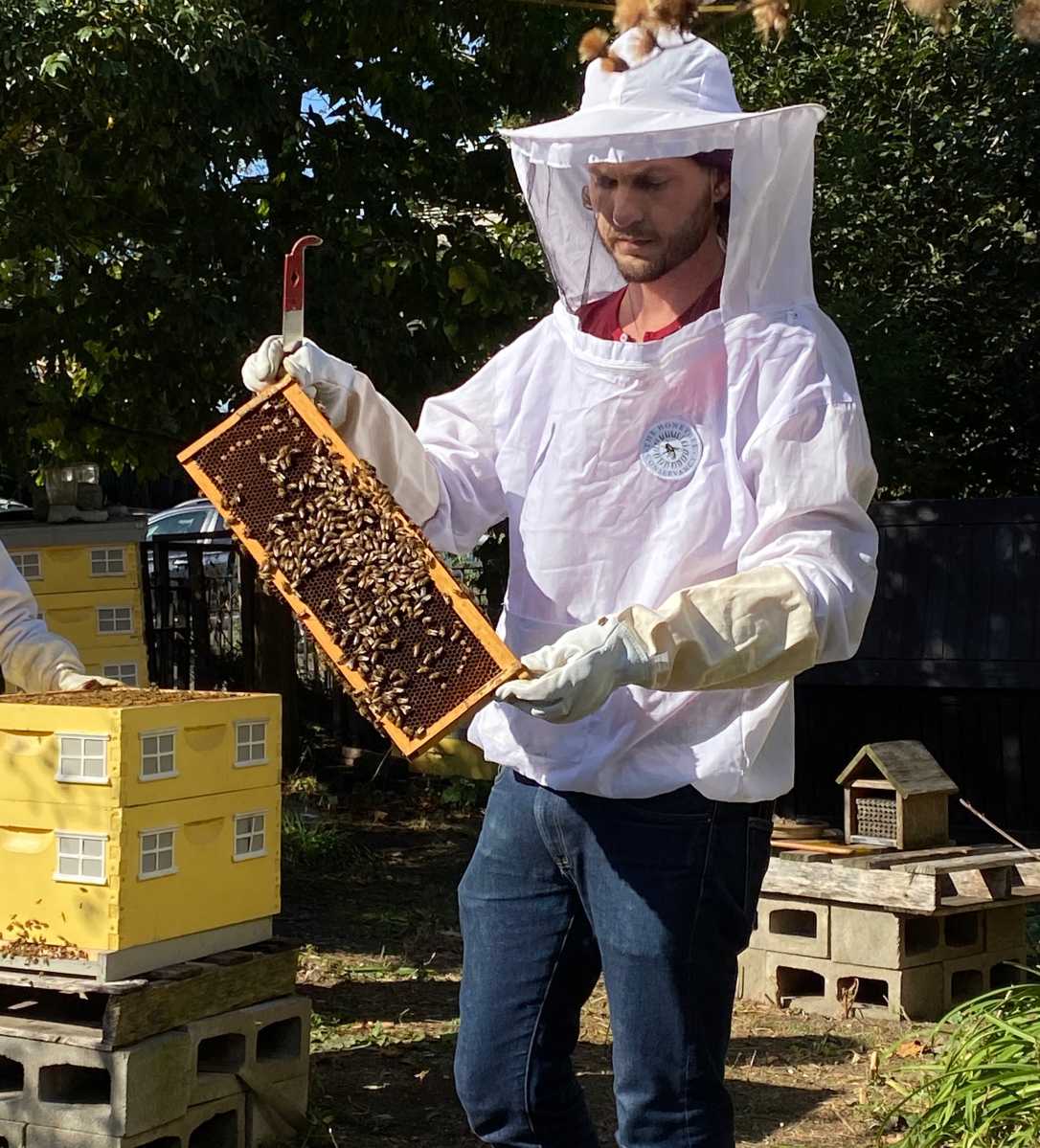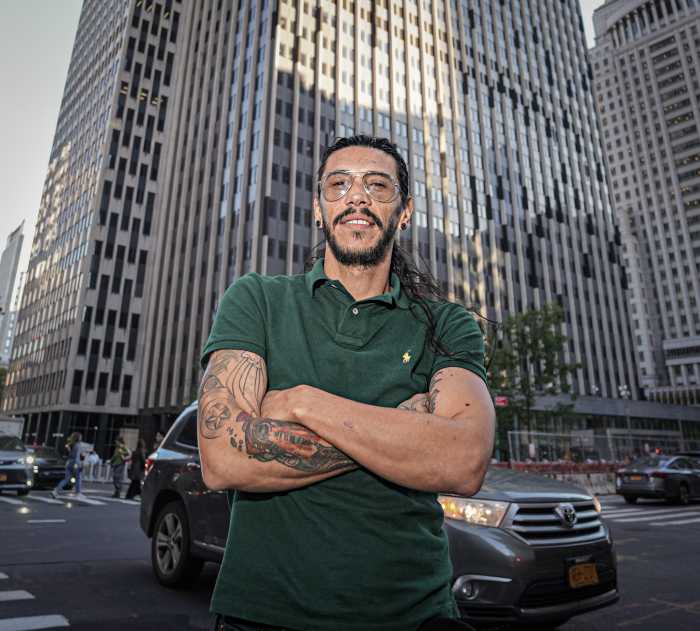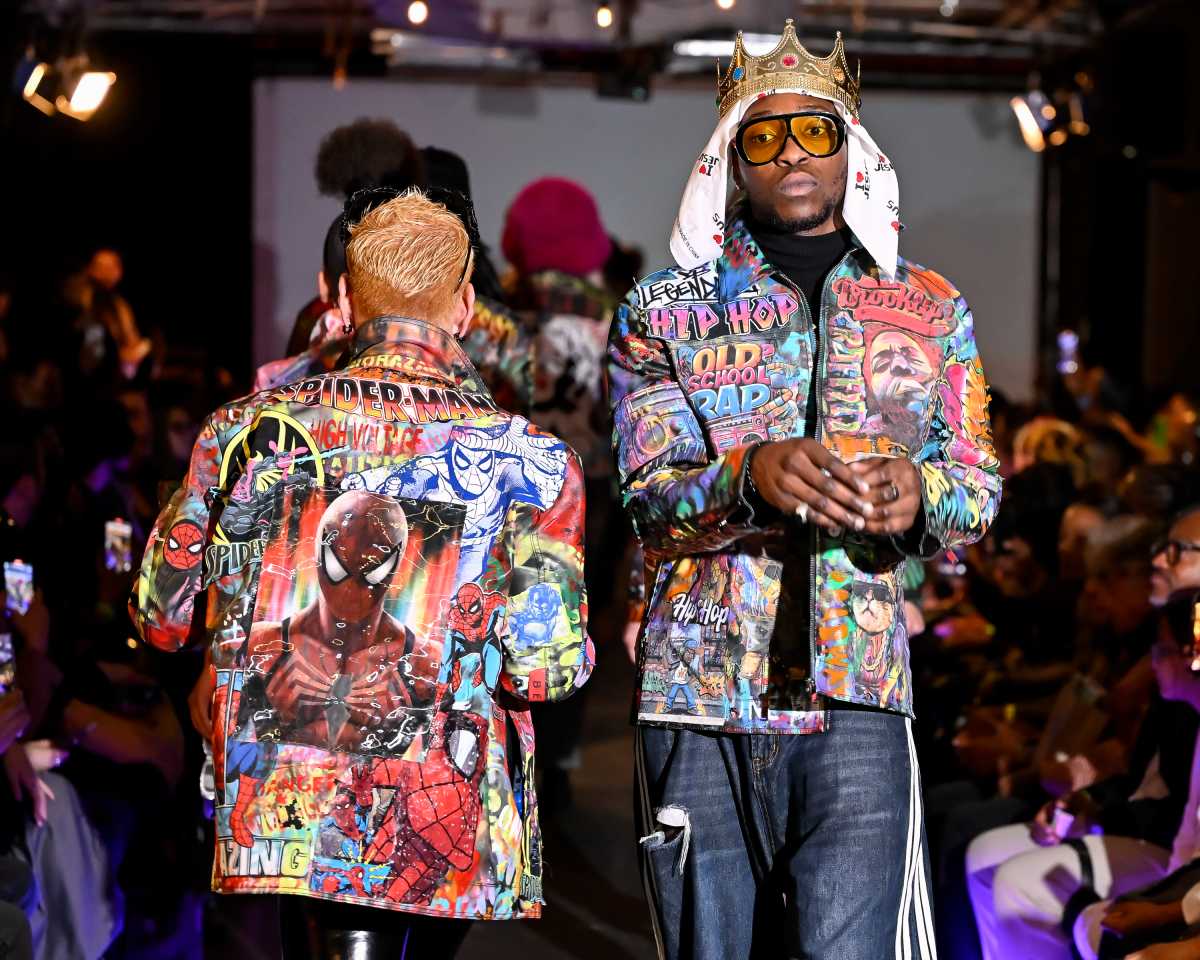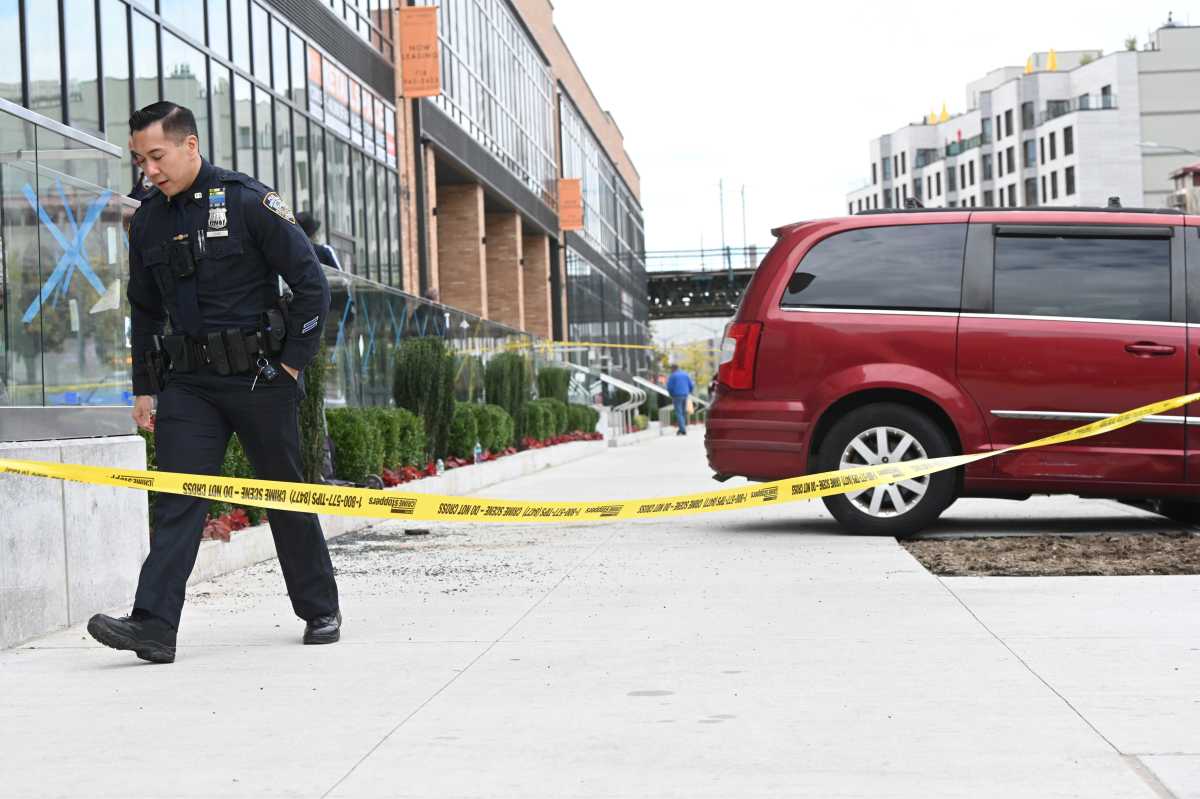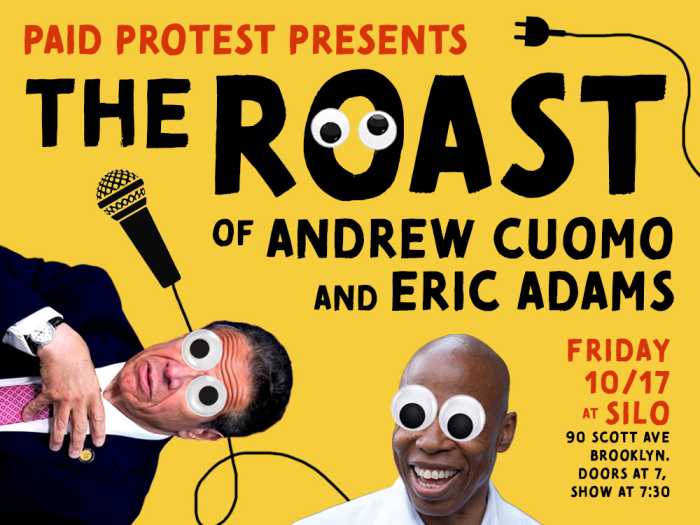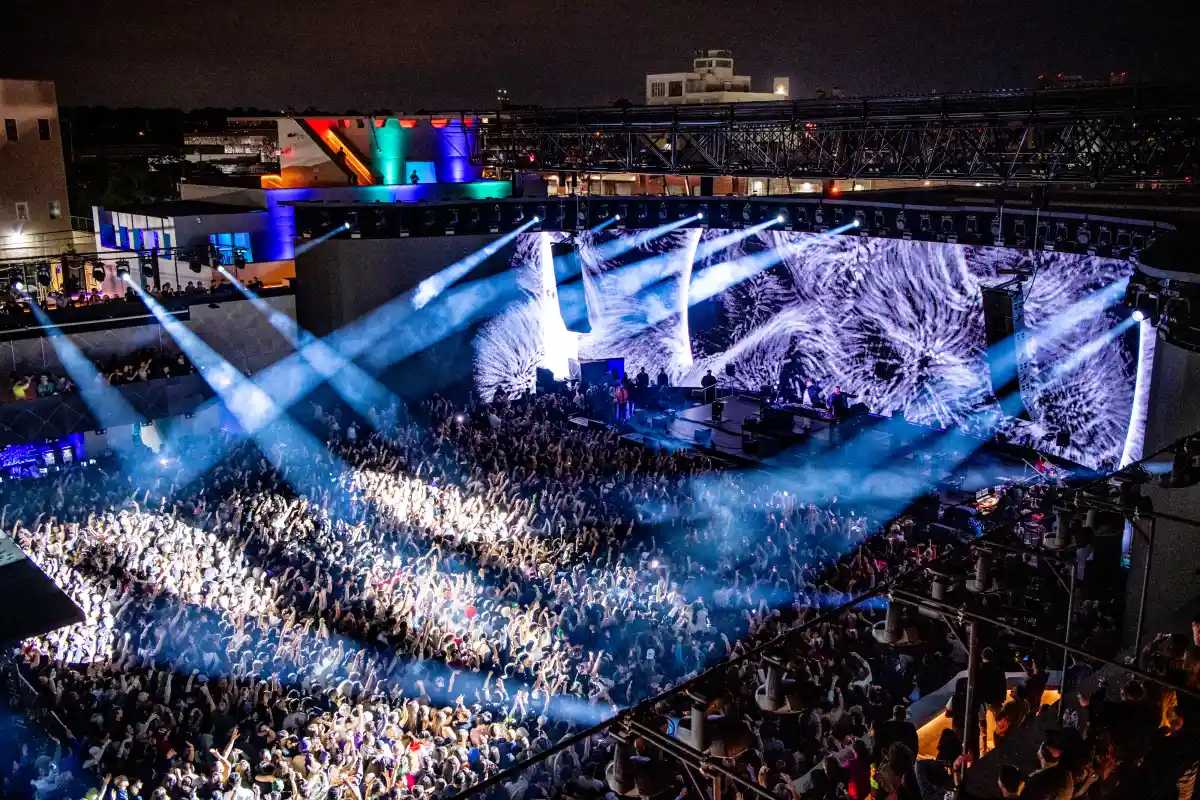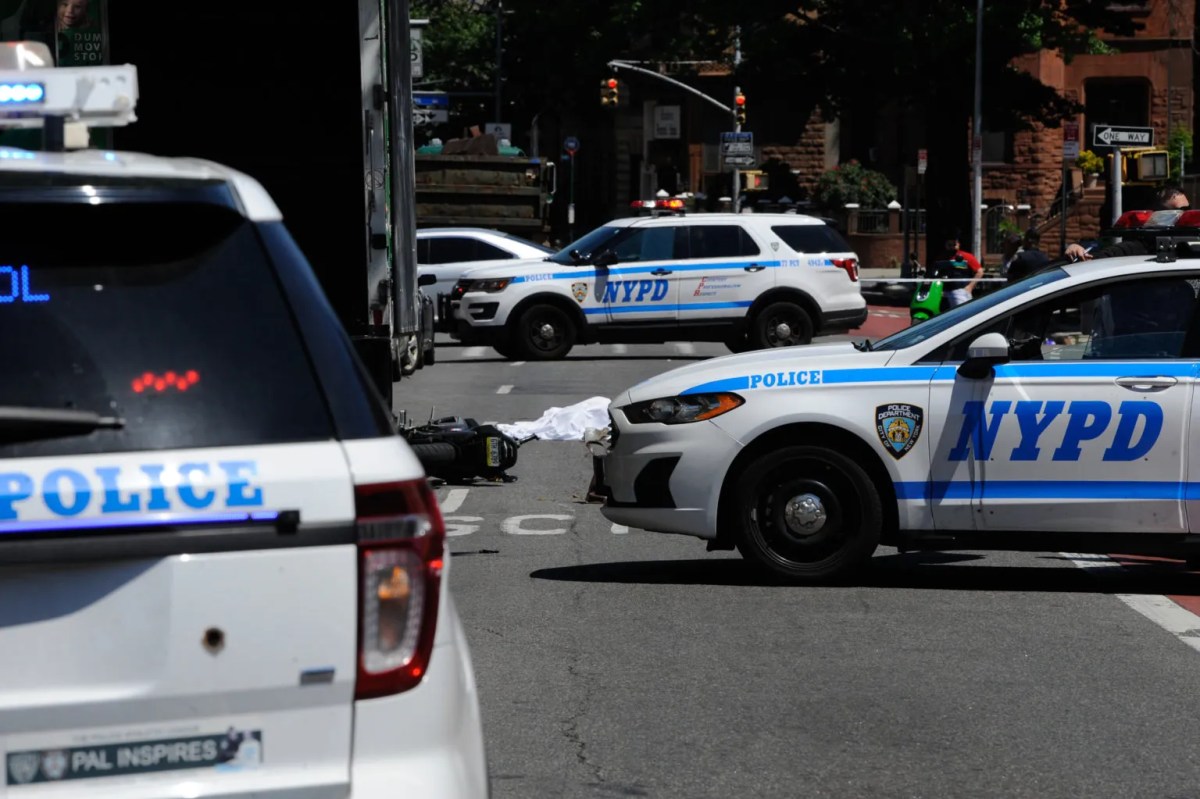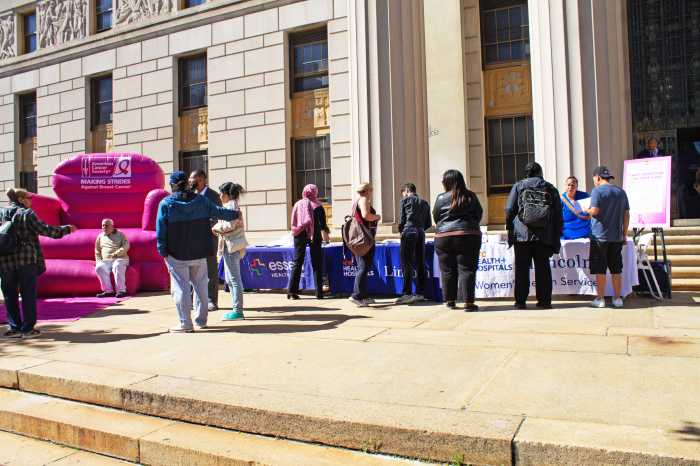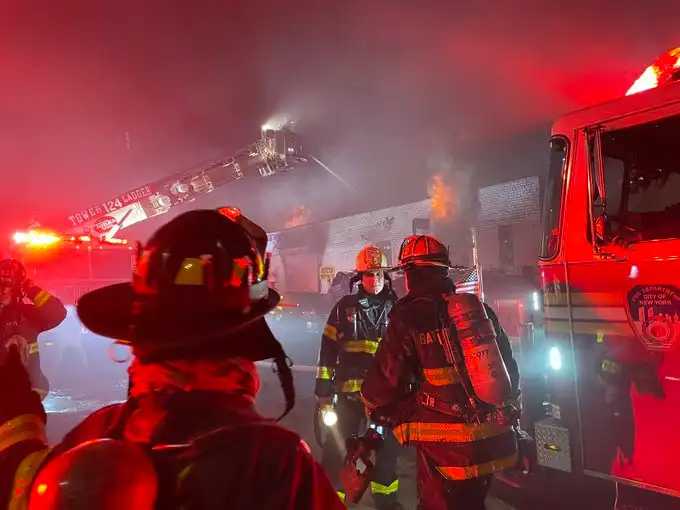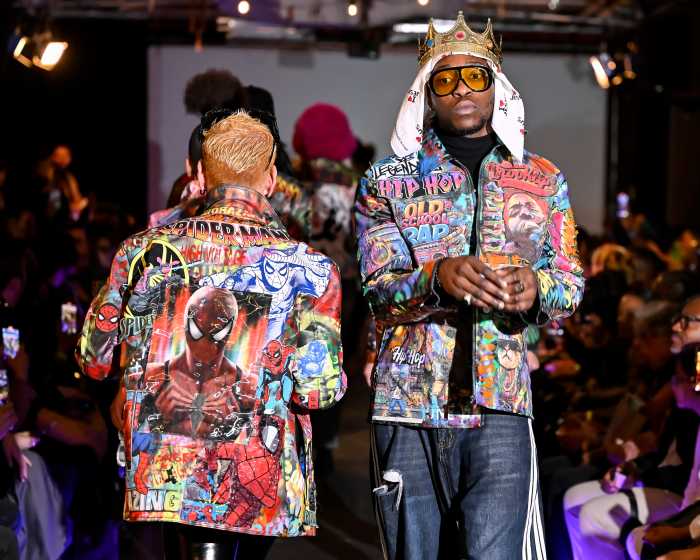By Elise Birkett
In a city that less than a decade ago labelled honeybees as equally dangerous as hyenas and venomous snakes, beekeeping has become not only a hobby for many New York City residents, but a platform for bee conservation and food-insecurity education.
In July, bees were declared the most important species on Earth, according to a study conducted by the Earthwatch Institute. However, despite their significance, bees today face serious risks associated with climate change, pesticide use, colony-collapse disorder, habitat loss and parasites.
One in four native bee species in North America are at risk of extinction, according to the Center for Biological Diversity. Beekeeping in New York City is bolstering bee populations against these threats.
The Honeybee Conservancy, a nonprofit based on the Upper East Side, launched a two-fold campaign called #BeetheSolution last month to address problems of hunger while also securing the future for bees. During a workshop at The Battery Urban Farm Sunday, executive director of The Honeybee Conservancy, Guillermo Fernandez, spoke to participants about the importance of these pollinators and how beekeeping in the city can benefit local food production.
Fernandez, who works days as a marketing director at Spectrum Reach, explained that their campaign donates beehives to community gardens in low-income neighborhoods, which increases these gardens’ food yields while supporting honeybee and native bee species.
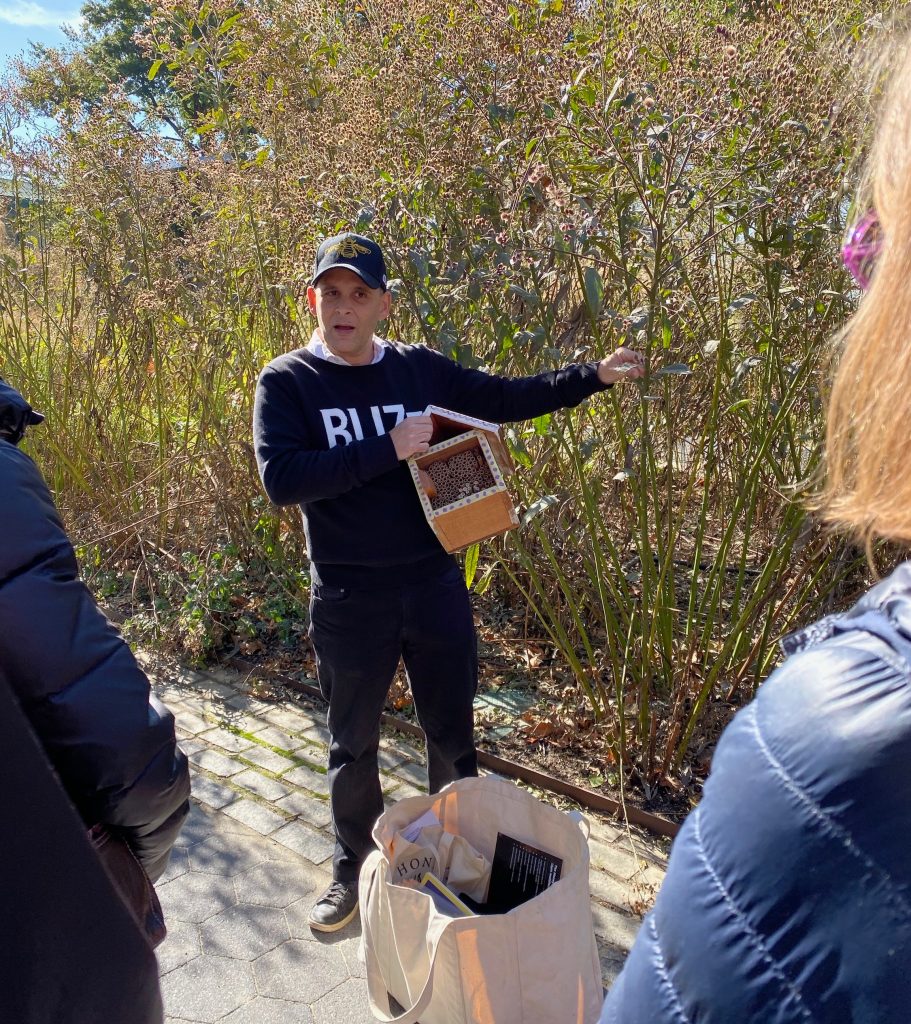
“I remember times when my parents were struggling to get food for us and it was an area that didn’t have really any fresh fruit or vegetables,” Fernandez said, on reflecting how growing up in a food desert influenced his work today.
Fernandez said the conservancy recently donated a beehive to Hell’s Kitchen Farm Project through the Sponsor-a-Hive grant. He anticipates the difference their grant will make to the soup kitchen and Community Supported Agriculture garden will be significant “We expect they’ll go from 250 to 400 pounds of food that they’re giving out to homeless people and families in need here in New York City,” he said.
At the workshop, co-hosted by The Honeybee Conservancy and New York City’s school gardens program Grow to Learn, Fernandez and two beekeepers from the conservancy showed participants the beehive kept at the Battery Urban Farm, located in the northeastern edge of Battery Park near State Street and Battery Place.
While the beekeepers pulled out a bee- and honey-covered frame from one of three yellow bee boxes, Fernandez said that decreased use of pesticides in New York City (as compared to rural areas) means beekeeping in the city is better at revitalizing bee populations, while also increasing local pollination and therefore, food production in the city.
Both honeybees and native New York bees, like the Mason and leafcutter species, are critical pollinators for fruits, vegetables and native New York plants. A 2016 UN report disclosed that more than 75 percent of the world’s food crops depend to some extent on pollinators like bees, so our ability to thrive is dependent on theirs.
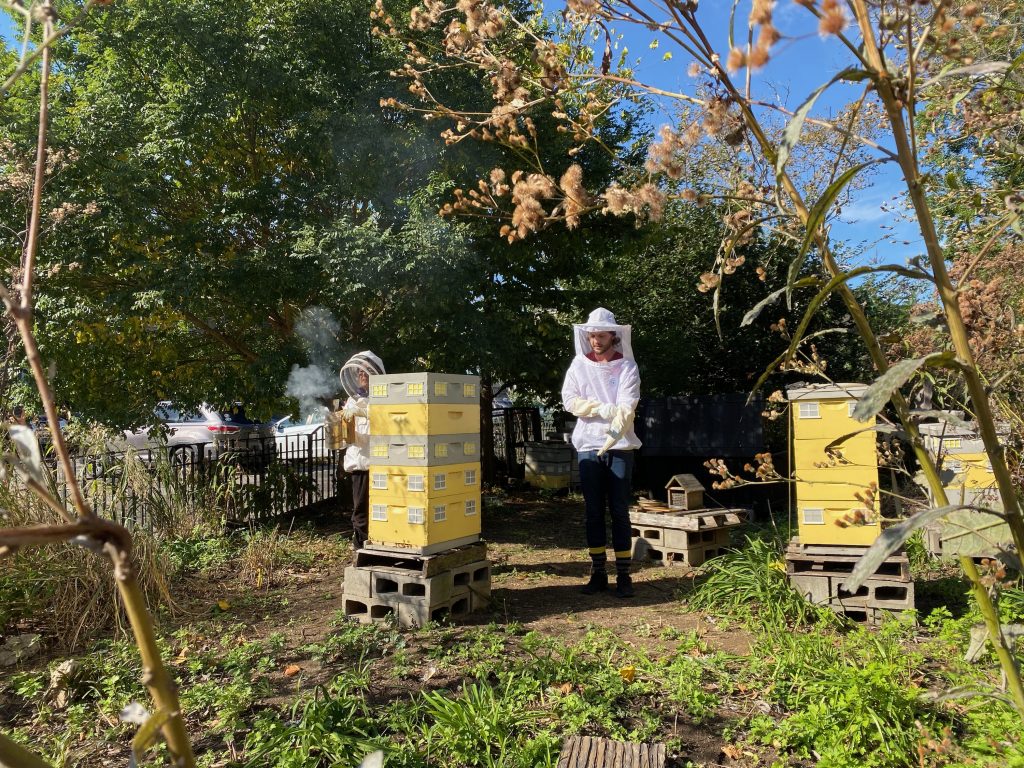
Jennifer Sclafani, 30, a pre-K teacher at a private school, attended the event to become more educated on bees in the city. “I just really love them,” Sclafani said. “It’s important for me to know more about something I really love so I can teach more effectively.”
Chelsea Yamada, 27, a cycling and safe streets advocate who attended the event, also agreed beekeeping in the city is an effective way to invigorate bee populations while reducing food insecurity and giving more people access to local produce. Yamada felt it provides an opportunity to enjoy nature in an urban environment.
Fernandez believes everyone can, and should, help support bee populations. He suggests New York City residents plant flowers such as marigolds, lavender and nasturtium, avoid hybridized plants which produce little pollen, build homes for native bees, and support local beekeepers by buying locally grown honey and produce. “Helping support the bee population will also help support us,” Fernandez said.
While the threats bees face are serious, New York City and other urban environments are making it easier for individuals to explore beekeeping and conservation. Fernandez believes saving the bees comes down to collective action. In order to make these changes, people must come together and each do what they can.
For him, dedicating time to educating others and providing support is most important.
“I was blessed enough that I was a bookworm and I ended up going to a good school,” Fernandez said, reflecting again on his own upbringing. “Now I’m doing well, and this is really my way of giving back.”
